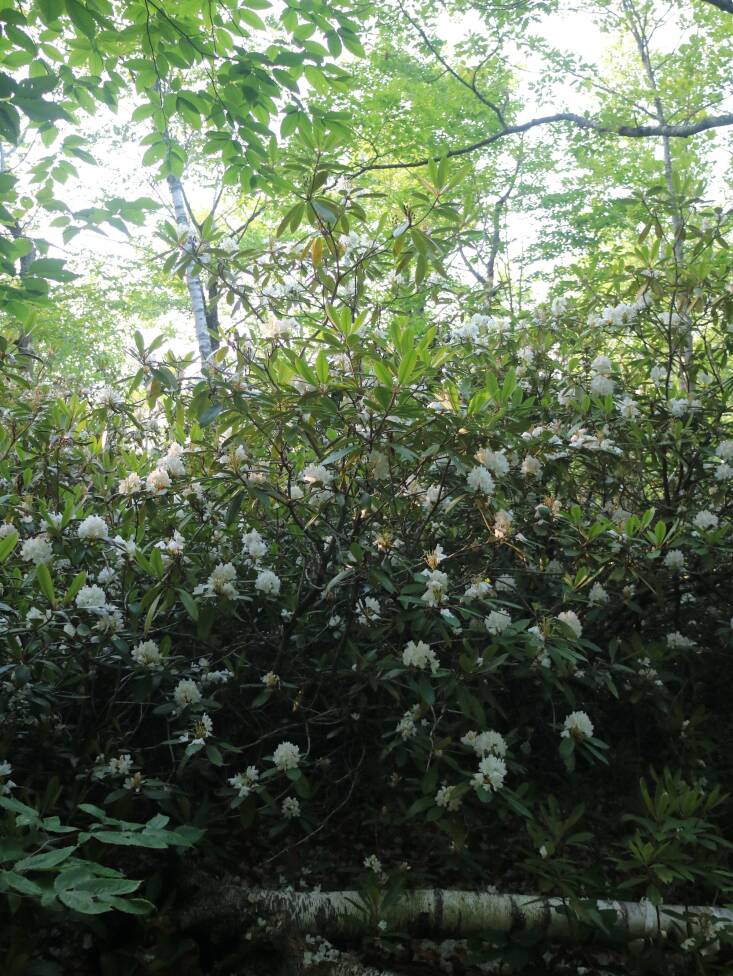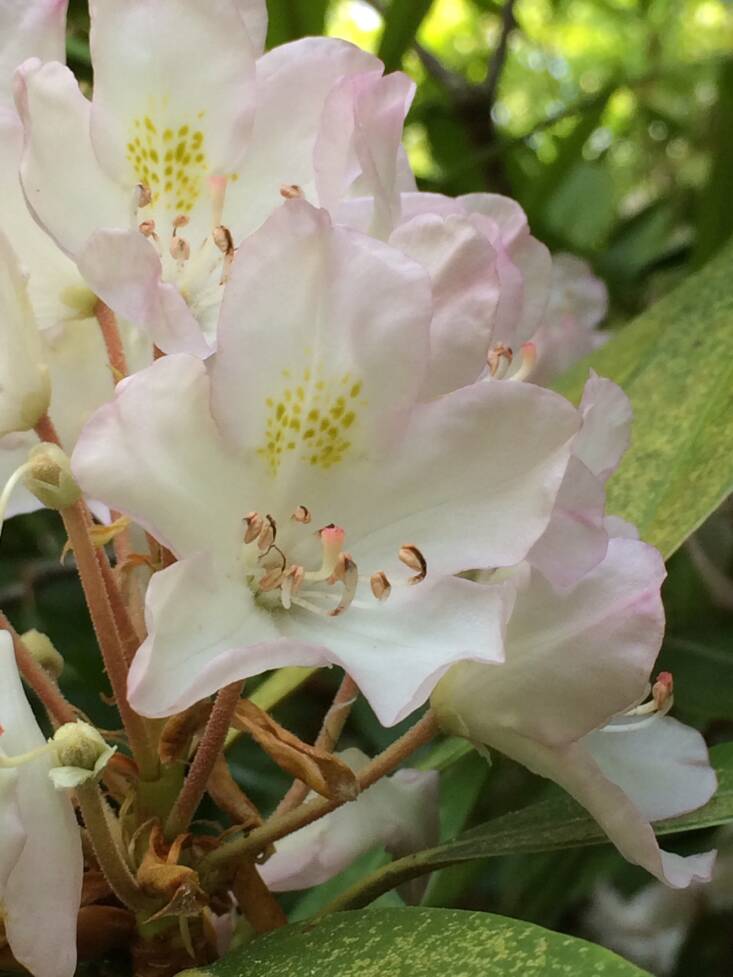Just 20 miles east of the picturesque coastline in Maine, on a long winding country road, beyond an unassuming sign, tucked beneath a tree canopy, is the Harvey Butler Rhododendron Sanctuary. Even when you are looking for the marker, it will likely take a slow pass or two to find the beautiful woodland reserve. And, if you aren’t looking for it, you’ll never know a glorious five-acre collection of wild rhododendron is simply glowing in the dense woodland.
This sanctuary, a property of the Native Plant Trust, comes into peak bloom in mid-July. At this time of year, Maine tends to be uncharacteristically hot. Humidity sticks to your skin, and the mosquitoes put on thick. But a few strides along the woodland path, now shielded from the ever-present heat of the sun by wide leaves and outstretched branches as far as the eye can see, and one’s internal temperature begins to drop. It must be said, the mosquitoes may still swarm exposed summer ankles, but the beauty that awaits is well worth the potential itch.
Above: Rhododendron maximum’s flowers attract pollinators. Photograph by Arx Fortis via Wikimedia.
Rhododendron maximum, also known as great laurel, is native to North America. This tall evergreen shrub stretches from Nova Scotia to Georgia. Most large collections are found in the southern Appalachian Mountain forests. And in fact, it is the state flower of West Virginia. The sheer mass of the stand at the Harvey Butler Sanctuary, combined with its northern location, makes it unique. While great laurel prefers shade, a break in the tree canopy allowing for some sunlight is required for the thickets to thrive. Once this shrub finds a space to expand into, the wide leaves and stems prevent other vegetation from taking root. This creates a natural border or barrier of leathery, deep green leaves and fleeting white, pink blossoms, growing from 4 to 30 feet high.
 Above: Great laurel at Harvey Butler. Photograph by Elizabeth Brown.
Above: Great laurel at Harvey Butler. Photograph by Elizabeth Brown.
What I adore about this particular sanctuary is the favorable ratio of physical effort to reward. The path into the garden is less than one mile from the road and is mostly flat, save for a few tree roots. After a mellow stroll through the forest, you stumble into what feels like an impossible, wild, forgotten garden. As someone who spent many long hours pretending I was Mary Lenox, the young heroine who discovers a neglected patch of earth in the Secret Garden, the magic of a garden thriving without human touch is thrilling. While Mary marveled at flowers such as roses and poppies, the true beauty of this five-acre patch of woods lies in the fact that the vibrant white blossoms have grown completely on their own. I’ll resist the urge to tell you how to feel in such a place, but for me, it is the reminder that life exists beyond our own perceptions.
 Above: Pink-tinged flowers. Photograph by Erik Sechler, courtesy of Native Plant Trust.
Above: Pink-tinged flowers. Photograph by Erik Sechler, courtesy of Native Plant Trust.
If you’d like to see the Rhododendron maximum in its full splendor, consider taking a guided tour with Shawn Jalbert, plant biologist and native plant advocate, on July 13th from 1 to 3 pm. Or perhaps visit one of six plant sanctuaries protected by the Native Plant Trust. Other locations include the Eshqua Bog in Hartland, Vermont, which has a collection of lady’s-slippers, and the Hobbs Fern Sanctuary in Lyman, New Hampshire.
See also:



